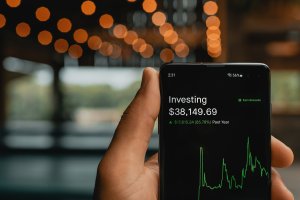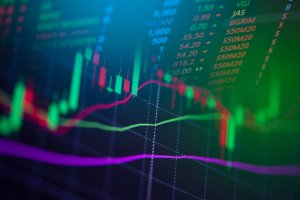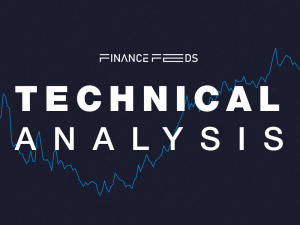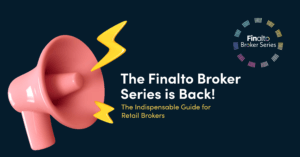Investing in a Bear Market: Strategies, Risk Management, and Signals to Look For
In the bear market, traders are seeking stability through flight to quality, tight stop-loss orders, and a focus on stablecoins and DeFi platforms, while long-term investors evaluate fundamentals and Bitcoin shows positive performance amid regulatory signals.

The crypto community has entered an epoch of extreme regulatory uncertainty, unfavorable macroeconomic conditions, and depressed investors’ sentiments — in other words, we are in a bear market. Adding to the situation’s complexity, signals of wider crypto adoption are also mixed.
For instance, both the EU, with its MiCA regulation, and the US, recently revealing the Stablecoin Bill draft, imply both the industry’s long-term legitimization and short-run compliance pressure at the same time, leaving investors disoriented.
What are the most widespread investment strategies in the bear market, how are traders protecting their assets from unexpected volatility, and what to possibly expect for Bitcoin and the industry as a whole in the next quarter?
Tight Price Action and Flight to Quality
The ambiguity of the market’s future, previous negative performance, as well as the overall investors’ anxiety, exacerbated by high interest rates, lead to the so-called flight to quality. Market players are willing to accept a smaller return for lower volatility, and the trading volumes and price volatility decrease. In general, traders decrease their position size to limit potential losses in case of unplanned price movements; and there is also a trend for tightening stop-loss orders to exit positions quickly if a small range breakout occurs.
While withdrawal to cash is limited, short- and medium-term traders tend to reevaluate their portfolios, focusing on stablecoins and DeFi platforms — a sort of safe haven during bear markets. Combining these tools is viewed as an opportunity to preserve high liquidity and earn returns from yield farming, allowing traders to weather the storm of unstable market conditions.
As there is not enough information or significant price movement to warrant a buy or sell order, we observe many long-term investors preferring to hold. Retrospectively, investors will evaluate the fundamentals causing the bear market and estimate their effect on the long-term value of assets. If any information on true value gets produced, we are likely to see some price action.
Still, the direction of price changes is impossible to forecast: it is equally expected that investors will realign their strategy to decrease their holdings of overvalued assets or, alternatively, buy more of assets traded at a discount.
Tight Trading Range: Adjusting Strategy and Mitigating Risks
It is common knowledge that all traders adjust their strategies to suit market conditions — and the same is true in a bear’s market tight trading range. Due to decreased volatility, range traders look to take advantage of key support and resistance levels within that range. Meanwhile, breakout traders stand by to try and anticipate substantial moves after the price breaks out of the range in either direction.
No matter what type of trading one prefers, traders watch out for indicators of a future price breakout, as it represents a trend change and a need to hedge the position or capitalize on momentum trading. Here, one of the commonly indicators is trading volume. An increase in trading volume means the start of the so-called Keynes’s Beauty Contest, where investors are attracted by the increased attention to the asset and attempt to predict the breakout direction, typically followed by significant price volatility.
Another widely recognized sign of building momentum and a potential coming market shift is a change in local extrema points — either higher lows and higher highs or lower highs and lower lows. For technical indicators, Bollinger Bands or moving averages can highlight signs of price compression before a breakout.
Finally, besides risk-mitigation strategies, the bear market and tight trading range turn investors’ attention to market-neutral strategies. We observe a rise in popularity of low-beta investment strategies like covered calls, diversification of trading portfolios in general, and the already mentioned flight to quality — that is, to stablecoins and DeFi yield farming.
What’s Next for Bitcoin?
Although the current price activity of Bitcoin is uncertain — the currency has been in a sideways trend since late March — I am generally happy with its performance in 2023. Bitcoin appreciated by more than 60% from the beginning of the year, and the regulatory signals of legitimization allow to cautiously infer that the investors’ sentiment is, on average, optimistic.
However, one shouldn’t discard the possibility of more volatility in the short term. Robust growth is possible only with the stabilization of market conditions, and we are still far from it. Yet, we can anticipate more clarity on medium-term trends after the period of tight price action is over.

__________________________
Anthony Cerullo is the Chief Communications Strategist of Walbi, a hybrid DeFi platform, and a crypto and blockchain enthusiast with over 10 years of experience in FinTech. After starting in traditional finance marketing, Anthony eventually transitioned to the blockchain industry in 2013. He was an early investor in Ethereum, Chainlink, and several other popular coins in the nascent stages of cryptocurrency.
The subject matter and the content of this article are solely the views of the author. FinanceFeeds does not bear any legal responsibility for the content of this article and they do not reflect the viewpoint of FinanceFeeds or its editorial staff.









